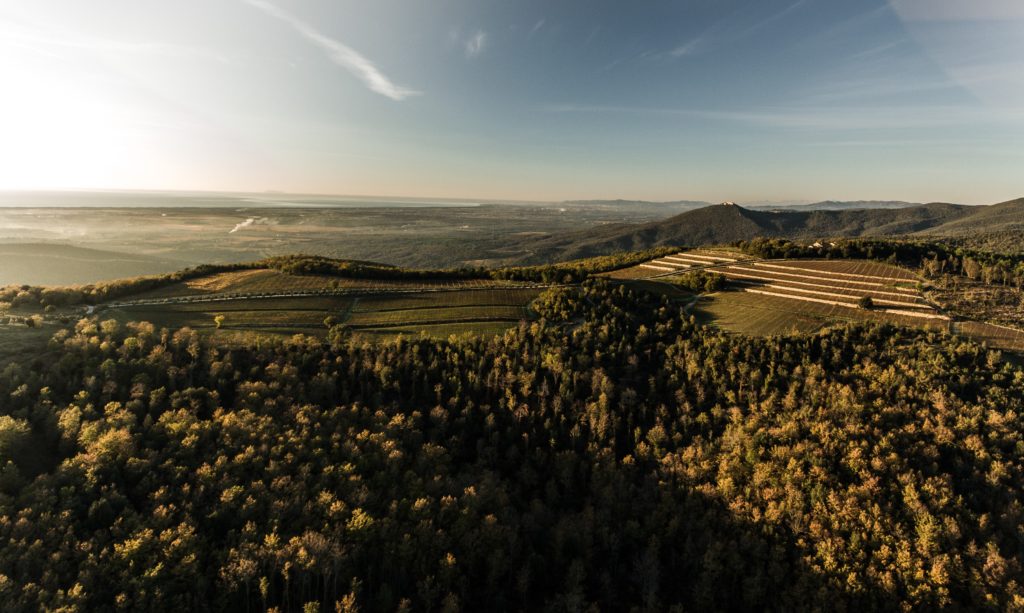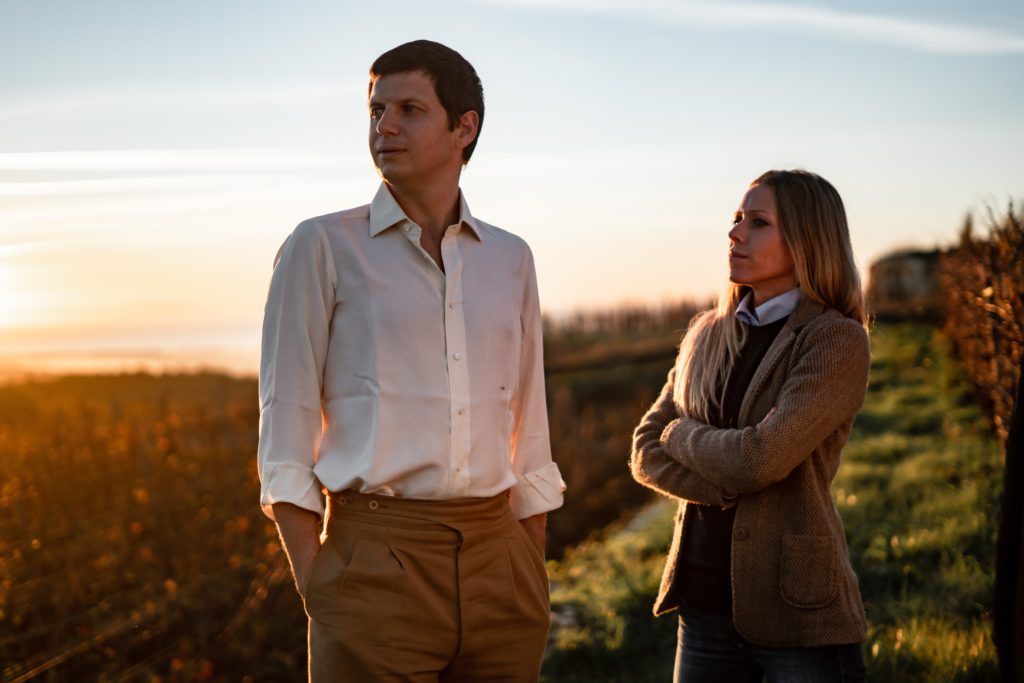
Tenuta Sette Cieli: Winemaking without a recipe
Tenuta Sette Cieli winemaker Elena Pozzolini doesn’t follow a recipe in the vineyard or the cellar, writes Peter Ranscombe.
WHAT separates a chef from a cook?
An inexperienced cook like myself has to follow a recipe line by line to make sure that the same risotto or carbonara or Bolognese appears every time.
A chef, on the other hand, has the skill and the experience to follow their instincts, smelling, tasting, and tweaking as they go.
If a winery is like a kitchen then Elena Pozzolini is definitely a chef and not a cook.
“I have no recipe – in the cellar or in the vineyard,” she explained during a recent online wine tasting.
Pozzolini makes her wines at Tenuta Sette Cieli, an estate on top of a hill in Bolgheri.
The region rose to fame in the 1980s for its “Super-Tuscans”, wines made using Bordeaux varieties like cabernet sauvignon and merlot.
Those Super-Tuscans broke the local labelling laws by not using the native sangiovese variety and so had to be sold as “vino da tavola” or Italian table wine.
That classification belied their high quality and the high price tags that followed.
Wine label rules eventually caught up with the creation of a specific red Bolgheri designation.

Vino with a view
While Bolgheri’s wine-producing area expanded from its hilly heartland towards the sea during the 1980s and 1990s, Tenuta Sette Cieli took a different tack.
At 400 metres above sea level, its hilly location gives it a similar soil profile to the San Guido estate, where the original Super-Tuscan, Sassicaia, is made.
Indeed, owner Ambrogio Cremona-Ratti can gaze across from his estate, which is surrounded by trees, to San Guido.
Cremona-Ratti’s mother bought Tenuta Sette Cieli as a place to breed horses.
The family – which made its money through printing silks for the textile industry – was advised by local winemakers, including the Ornellaia-making Antinori family, that Tenuta Sette Cieli would also lend itself to grape farming, thanks to its rocky limestone soils.
Ten hectares of vines were planted at the top of the hill in 2000, including classic Bordeaux varieties such as cabernet sauvignon, cabernet franc, merlot, and malbec.
A further 5ha have since been added further down the slope, including some sangiovese, with space for white varieties to follow.
Yet Cremona-Ratti is keen to keep the estate to below 20ha in size as he believes the present setup is manageable.
“It’s important for us that the same person who’s out in the fields everyday is the same person guiding the grapes through fermentation in the winery,” he explained.
And the farmer-cum-winemaker entrusted with that task is Pozzolini.

It begins in the fields
Like so many winemakers around the world, Pozzolini pays close attention to the health of her vines.
“You can buy a fancy winery with fancy oak and fancy tanks, but if you don’t have the right vineyard then you can’t make good wine,” she said. “A vine is like a human – I’m quite short, so I need different things to tall people, and vines are the same.
“Balanced wines need balanced vineyards, and that’s why we are organic.”
That attention to detail for each individual vine has echoes of Paula Papini Cook’s work at Le Miccine, two hours further inland in the heart of the Chianti Classico region.
Like Pozzolini, Cook farms organically on a cooler, hill-top site, and maintains that she has no recipe for her wines, instead reacting to each vintage’s variations.
That hillside freshness was on show in the 2017 Tenuta Sette Cieli Indaco’s acidity, which was crisp, but settled, balanced by well-integrated tannins, vanilla, and a really ripe mix of blackberry, black cherry, red cherry, and raspberry from the equal parts of cabernet sauvignon, merlot, and malbec in the blend.
The 2016 Tenuta Sette Cieli Indaco (£45, Swig) came from what Pozzolini called a “classic vintage”, with more violets among the red and black fruit on the nose and more assertive – yet still well-balanced – tannins on the palate.
That vintage variation is even more apparent in the 100% cabernet franc 2017 Tenuta Sette Cieli Scipio, a wine that used to only be made in the warmer years, but now climate change means fewer vintages need to be skipped.
While the 2017 Scipio’s acidity perhaps still needs longer to settle down, the 2016 Tenuta Sette Cieli Scipio (£75, Swig) is already showing well, with a fresher nose full of raspberry, dark chocolate, and cedar, plus a surprising amount of dark fruit on the palate for cabernet franc.
Grabbing a Super-Tuscan of Tenuta Sette Cieli’s quality for £45 is a real bargain, especially from a site that’s closer to the original Bolgheri style, and in the hands of a talented winemaker.
Read more of Peter’s wine, beer, and spirits reviews on his blog, The Grape & The Grain
TAGS

